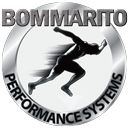PERFORMANCE PROGRAM LEVELS
THE BPS PROCESS
EVALUATION – Biomechanical
Full medical-based evaluation that will examine each joint in the body and the muscles that cross the joints. This evaluation will be based on:
- Muscle Activation Techniques (TM) (MAT) Jumpstart Analysis
- Muscle function and range of motion
- Identify asymmetries (deficiencies)
- Neural connection to OPTIMAL muscle contraction
- Functional Movement Screen (TM) (FMS)
- Evaluating efficiency in Essential movement patterns for training, sport, and everyday activities
- Pinpoint areas of weakness/deficiency and areas of greatest training opportunity
- Stability, balance, mobility, motor control
- Specialty Evaluation
- Other forms of evaluation techniques that is unpublished data of foot/toe function trunk/spine function
- Postural analysis
ASSESSMENT – Anthropometrics and Availability
- Anthropometrics
- Standards, body composition, energy equations
- Growth pattern evaluation
- Girth measurements to assist to pinpoint skeletal structure, muscle mass, and growth potential
- Periodization Chart
- Sport(s), Activities, Season(s) (pre-season, in-season, off-season, etc.)
- Important events (testing, showcase, tournaments, combines, etc.)
- Logistics – availability of training and time commitment
PERFORMANCE TESTING
- Speed and Acceleration (10yd, 20yd, 40yd, 60yd)
- Agility – Short Shuttle, L-Drill
- General Power – vertical and horizontal
- Upper Strength/Power
- Reaction
- Sport-Specifics
IDENTIFICATION – Stage of Developmental Growth
Determining where a youth client is with regards to developmental growth cycle is the THE most important aspect when assigning a program. Programming is NOT about being specific to age, gender, or sport. It’s all about Peak Height Velocity (PHV, or commonly referred to as “puberty”). For youth clients (ESPECIALLY youth athletes), the type movement training, plyometric level, and weight room loading patterns ALL must match the stage of growth.
- The excessive rate of growth lasts 6-18 months, and is typically around age 12-13 for women and age 13-14 for males.
- HOWEVER, EVERYONE grows at different rates and at different times, which is why training can’t be matched to “age” or “sport”.
- Those in growth stages BEFORE PHV or IN PHV will have drastically different programs compared to fully developed individuals.
- BPS IDENTIFICATION process will classify each client into the appropriate program
CUSTOM PROGRAM
- BPS 5-STAR PROGRESS (PHV classifications, training experience level, athleticism level)
-
- BASIC. Early, no/little experience, age 6-10
- FUTURE. Pre-PHV (2-6 months), some experience, age 9-13
- FUTURE-PLUS. During PHV, 1+ years experience, age 11-15
- ELITE-ICE. Post-PHV (2-6 months), 2+ years experience, age 13-16
- REVOLUTION. Fully developed, 3+ years experience, top-testing, college bound, age 15-21
- Resistance load and progression
- Weight Room stage and progression of periodization model matching PHV category
- Plyometric program – 36 levels of vertical and horizontal; each client is assigned and progresses at an individual level
- Movement/Speed
- SPORT AND POSITION SPECIFICS!
- General setting the base
- Level of each dependent on weight room, PHV, plyometrics
- Scheduling through “BPS App” will show all available classes that are weight room based and non-weight room based; UNLIMITED access!
- Each member will have individualized manual to monitor and progress ALL aspects; BPS staff assigned to each class to implement, coach, and assign records/progression
- Coach:Client Ratio – MAX 1:8 (usually 1:5)
TRUTH – Dispelling the myths on youth training
- Resistance Training will NOT “stunt growth”
- FACT – INAPPROPRIATE resistance training will interfere with growth plate formation
- FACT – APPROPRIATE resistance training pre/during PHV is extremely beneficial (in weight room and on the field)
- FACT – body weight and band exercises ARE resistance, and should predominate weight room work for youth
- FACT – “pushups and situps” can be some of the most INAPPROPRIATE exercises done for youth
- Axial loading is NOT appropriate for all high school athletes/clients
- FACT – Most freshman in HS are still in PHV, and should NOT be putting a bar on their back for any exercise
- FACT – Other exercises that put excessive force on the spine (certain overhead exercises, certain heavy pressing exercises, etc.) can be inappropriate
- Importance of Sport-specific and/or Position-specific speed/movement training
- FACT – depends on PHV stage
- FACT – needs to be incorporated DAILY; but volume, type, and timing within session is all dependent on numerous factors and needs to be individualized
- PERFORMANCE TESTING
- Every 3-months to monitor progress and continue custom theme
- Report cards to display improvements
- BIOMECHANICAL
- Every time there is a change in developmental growth stage
- Every time there is a progression up the BPS 5-Star Levels
- Encompassed within BPS CAMPS (TM) methodology
- Program sheets in each member’s manual
- New weight room sheet every week of the 3-week microcycle
- Detailed notes on the movement/speed and plyometric progression charts
- Custom planning for upcoming events (season, tournament, showcase, etc.)
- TAKE YOUR PROGRESS ONLINE!!
- BPS “Training App” available for ALL clients with custom training logs available on phone/tablet
- Long term performance tracking can give detailed analysis of progression over time
BPS METHODOLOGY














You must be logged in to post a comment.